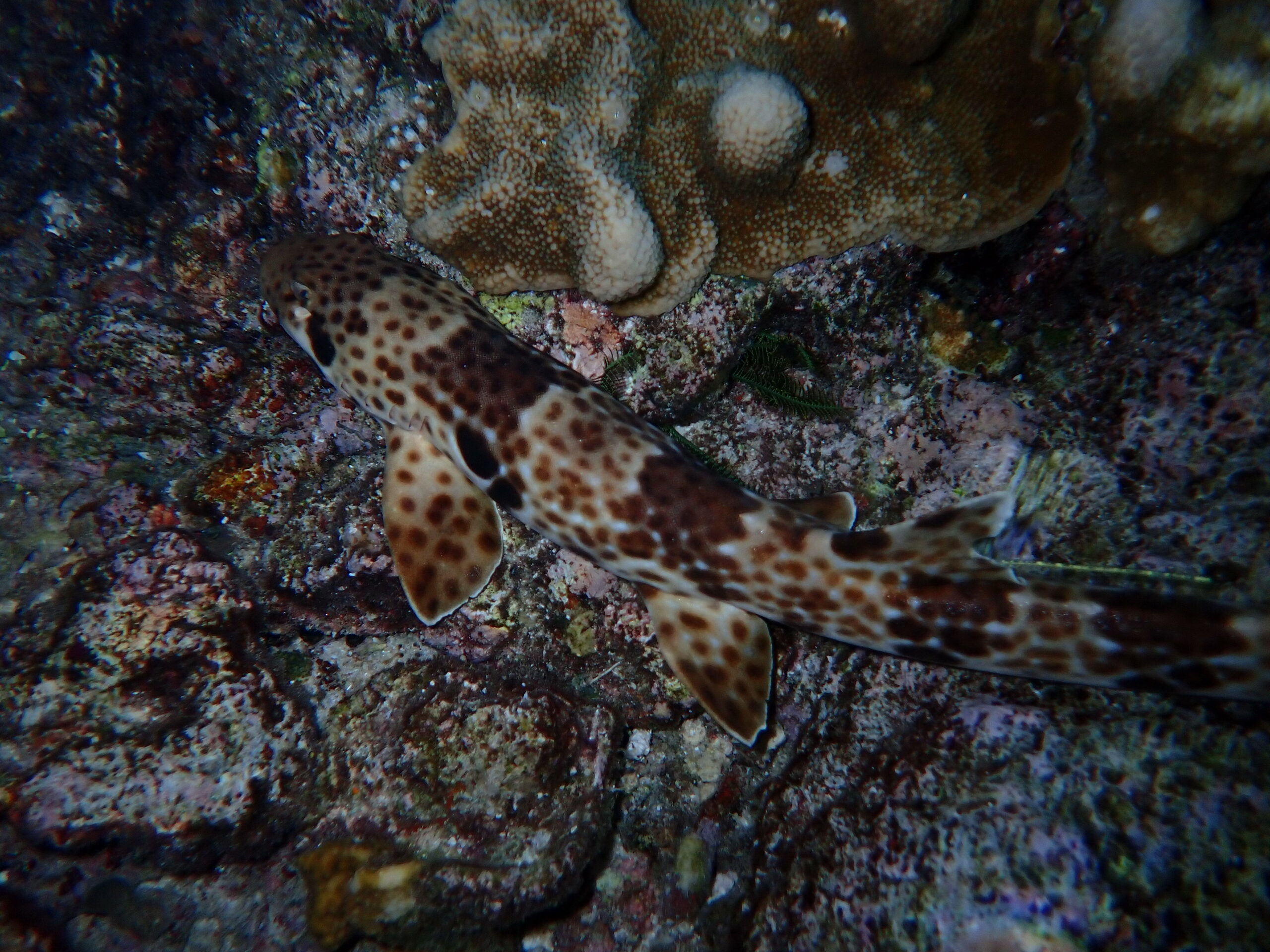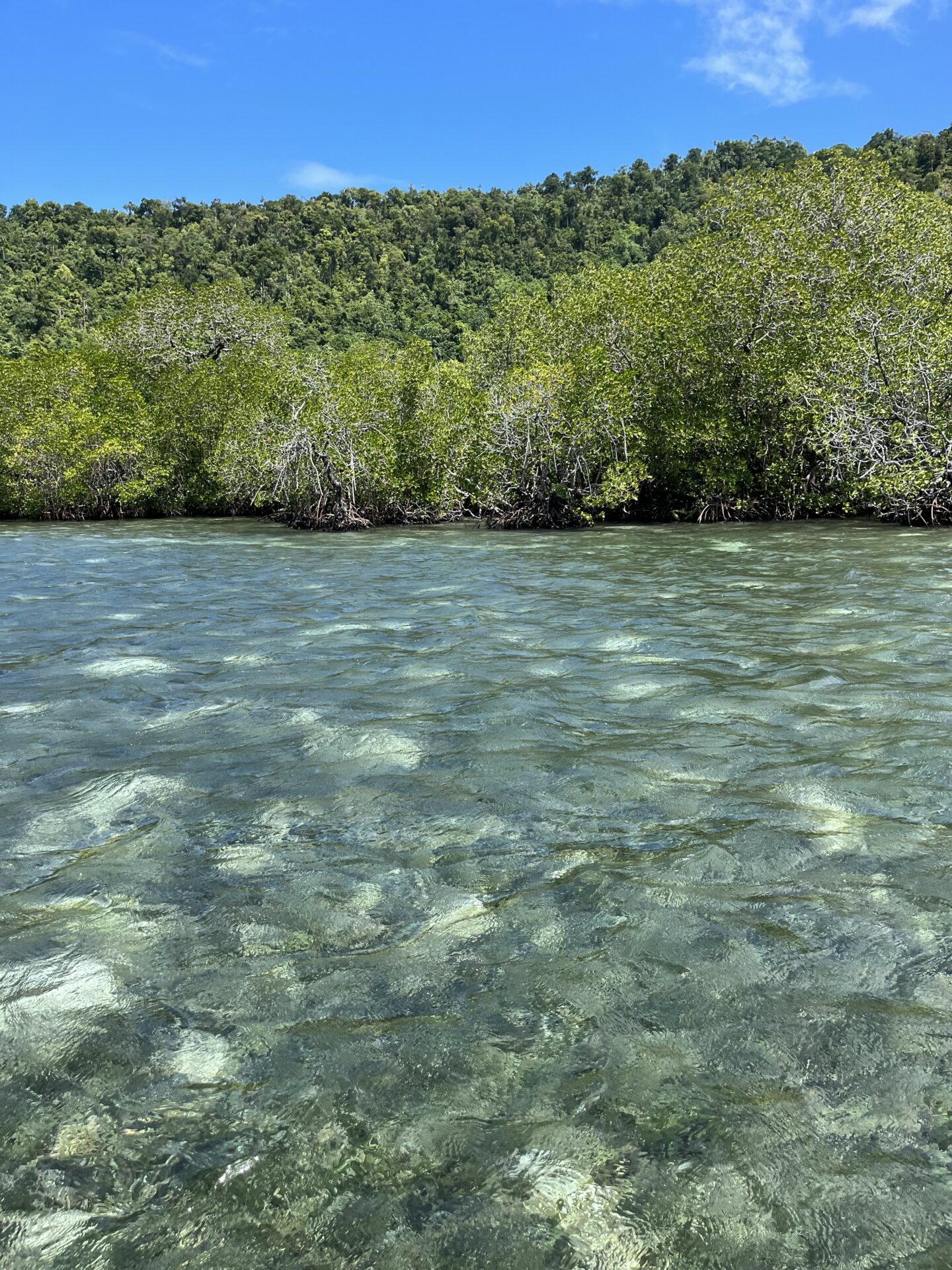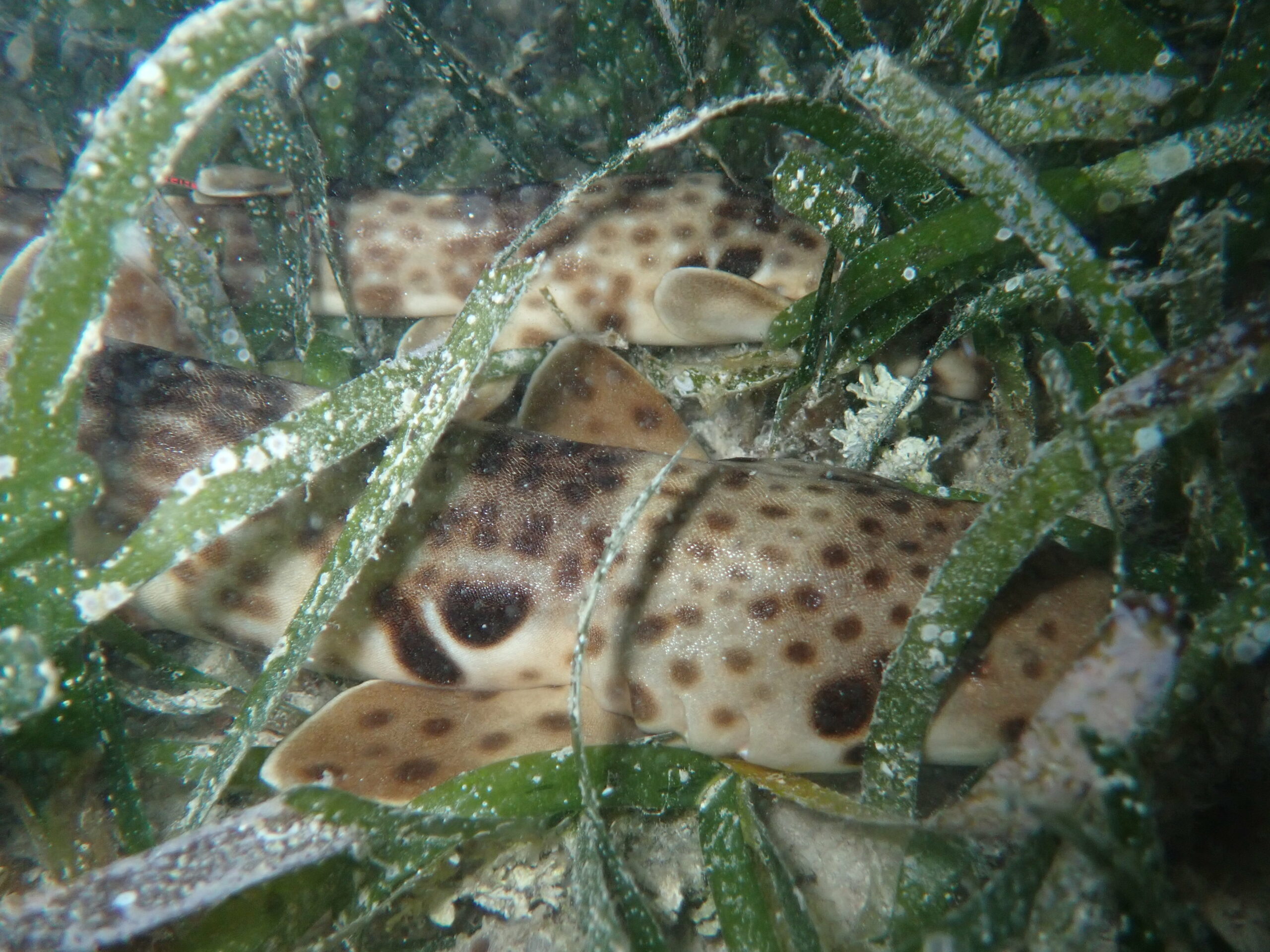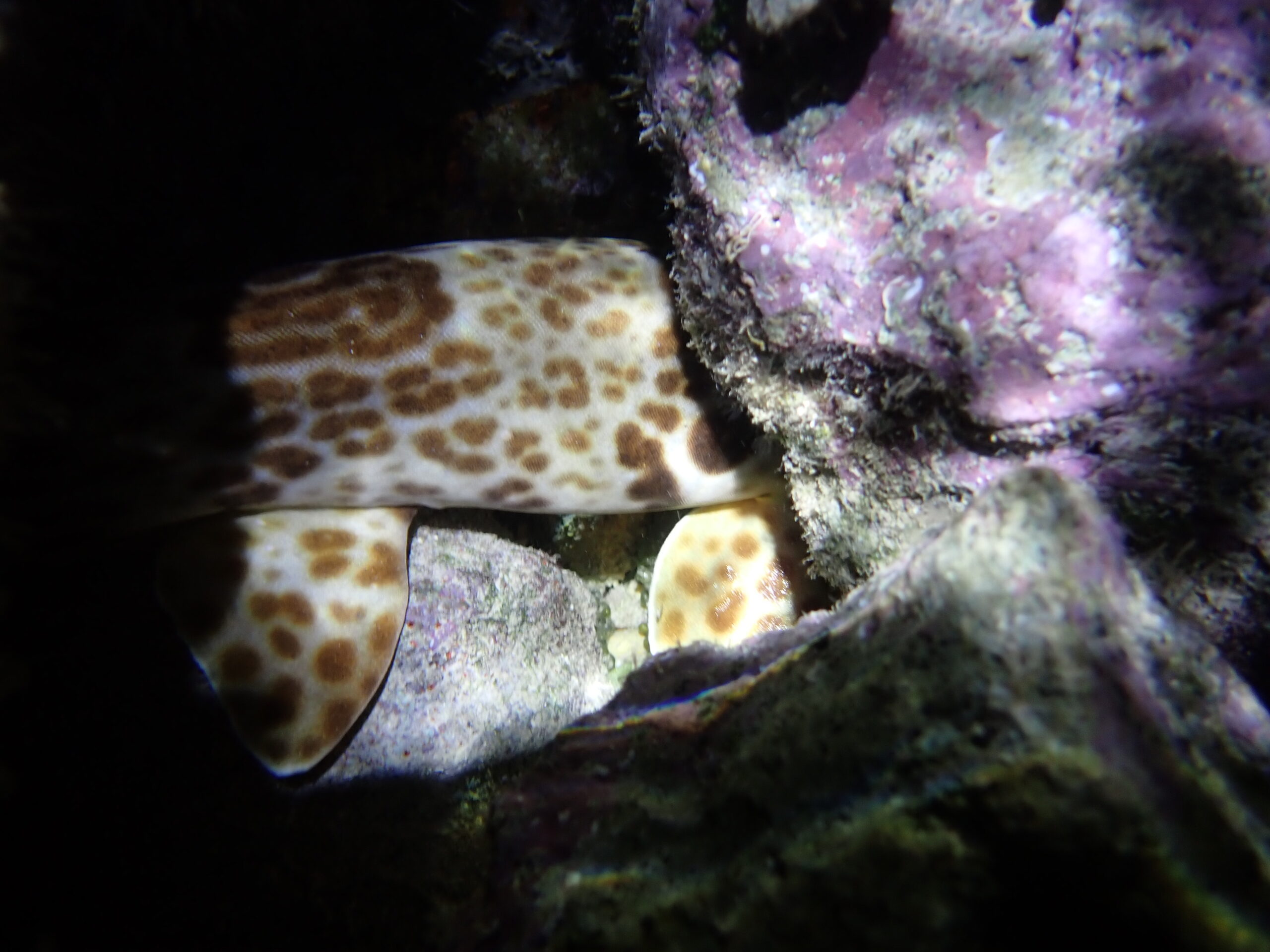Raja Ampat Epaulette Shark Habitat
The Raja Ampat epaulette shark (Hemiscyllium freycineti), locally called Kalabia, or Mandemor, is one of the six epaulette sharks that exists endemically in Raja Ampat Islands waters, Indonesia. This epaulette species is nationally recognised with the name of hiu berjalan or the walking shark, as are the other species of the same Genus. This species, just like the remaining Hemiscyllidae species in Indonesia, are fully protected by the national Indonesian law in early 2023. As assessed by the International Union for Conservation of Nature (IUCN) Red List, they are commonly found in shallow seagrass beds, coral reefs, and rocky outcrops at depths of 0–10 m (Allen et al. 2016). Even though the habitats are identified by the IUCN, but the specific information and monitoring habitat trends are needed to more understand regarding the habitats of Raja Ampat Epaulette Shark.

Raja Ampat epaulette shark on the coral reef ecosystem. Photo by © Faqih Akbar Alghozali
The findings from our exploration resonated with the findings from the previous assessment (VanderWright et al., 2021). Through walking and snorkeling surveys, Kalabia were encountered in seagrass meadows, corals, rocky outcrops, sandy fringes, and mangrove roots area. Our study in Arborek highlighted the prevalence of the serrated ribbon seagrass (Cymodocea serrulata) meadows as the dominant habitat (10cm – 100cm). On the other hand, around Yenbuba Island, Kalabia were encountered in mangrove roots areas (40cm – 130cm). These differences indicated that habitat preference needs to fit two criteria, suitable shelter and prey availability, regardless of habitat or ecosystem. This assumption was strengthened due to the findings of two until three recaptures in those areas.

Mangrove area in Yenbuba Island Photo by © Muhammad Wiralaga
The community also believes that the shark’s frequent presence near the shoreline is a result of people habitually discarding food remains, primarily fish, while preparing dinner every night. They also mentioned that Kalabia swim to the coast every night looking for food/prey.

Two Raja Ampat epaulette sharks resting next to one another in the seagrass meadows. Photo by © Muhammad Wiralaga
In Arborek, local children have even come across these sharks between rocks while playing on the beach during low tide at noon. Kalabia’s hide in the rocky outcrops and are very close to the shoreline/land and right below the homestay. There are many clams and food sources, therefore this area is indicated suitable for resting and hunting the prey during the daylight. But one of the biggest threats around this area is plastic waste disposed of from the land, which can directly affect Kalabia through entanglement.

Raja Ampat Epaulette Shark hiding under the rock. Photo by © Muhammad Wiralaga
These findings were the reason for our team’s hypothesis of the Kalabia preferred habitat, however, research/monitoring related to that habitat needs to be conducted periodically and in a wider range of locations. Based on our discovery in all habitats between the two islands, we encountered 315 individuals Kalabia in total and we will explain more information in the next article!

Raja Ampat Epaulette Shark hiding under the rock. Photo by © Muhammad Wiralaga
